From the discovery of electricity to the invention of the cell phone, new technology has brought massive changes to everyday life throughout history. The latest technological revolution comes in the form of artificial intelligence and machine learning. As faculty at UNT are shaping future AI use through research and instruction in the classroom, UNT alumni are innovating ways to harness artificial intelligence in various industries from data science to the arts.
Leading the AI Revolution
UNT alumni have harnessed the power of artificial intelligence.
March 29, 2024
Supporting life sciences
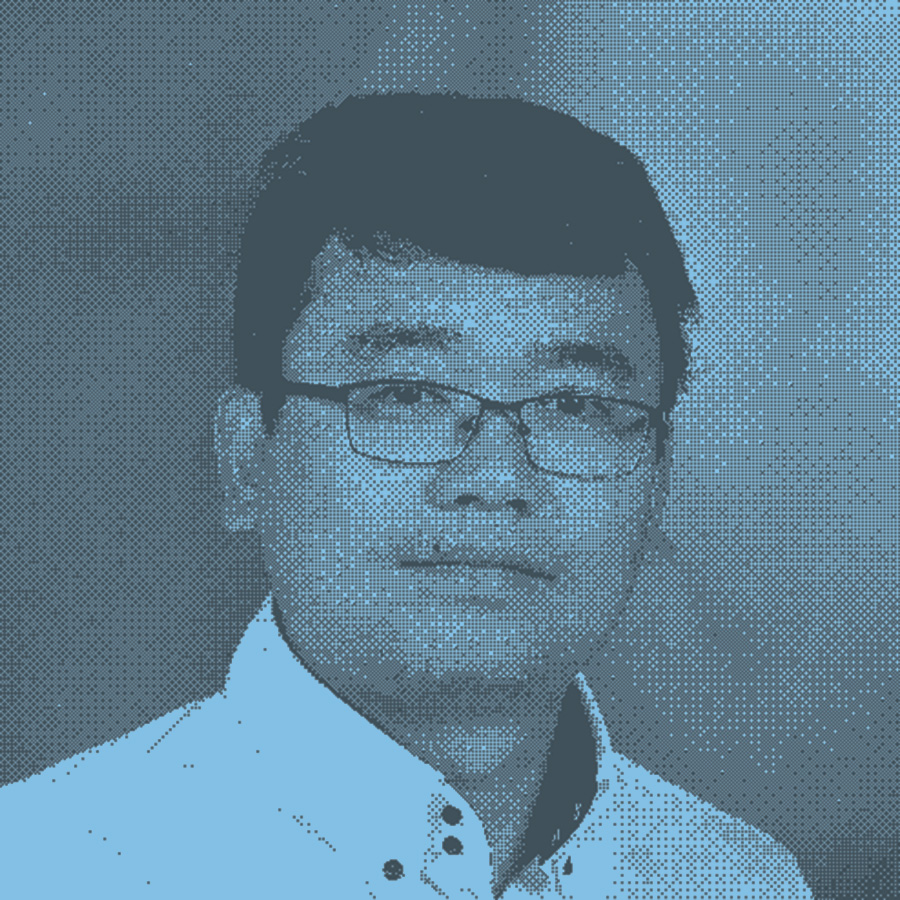
Qiang Guan (’14 Ph.D.)
As AI advancements in chatbots, image creation and robotics gain media attention, Qiang Guan ('14 Ph.D.), an associate professor at Kent State University, is focused on applications in education and medicine.
Two of Guan's projects will help teachers and students. The first is the Extended Reality Initiative meant to help train future teachers on best practices in classroom management and instruction. A student teacher can put on a virtual headset for a 360-degree view of a pre-recorded real classroom. An AI model, trained on data from experienced teachers going through the simulation, tracks the student teacher's movements and notes what they pay attention to and what they miss compared to the experienced teachers.
"Student teacher evaluations are usually done with surveys, which can introduce biases," Guan says. "With the AI, we know exactly what they did so we can provide better feedback."
The second project aims to create an AI tool that can not only grade a student's math homework, but also understand what concepts they have difficulty with.
"It could see a student may understand the concept of fractions, but they have a hard time multiplying fractions," Guan says.
This tool is meant to save teachers time on grading and allow them to focus more on how they can help a struggling student.
In chemistry and medicine, Guan is collaborating with teams in both disciplines to create an AI model to simulate medicine and composite testing that could shorten a weeklong process down to a single day.
Guan reached out to his colleagues at the Cleveland Clinic to join the medicine research project after seeing the effects of COVID-19.
"During the pandemic, we needed medicines that could quickly end it. I joined this team to bring in more energy and effort toward the end goal. It's like a mission to me."
Lessening the burden
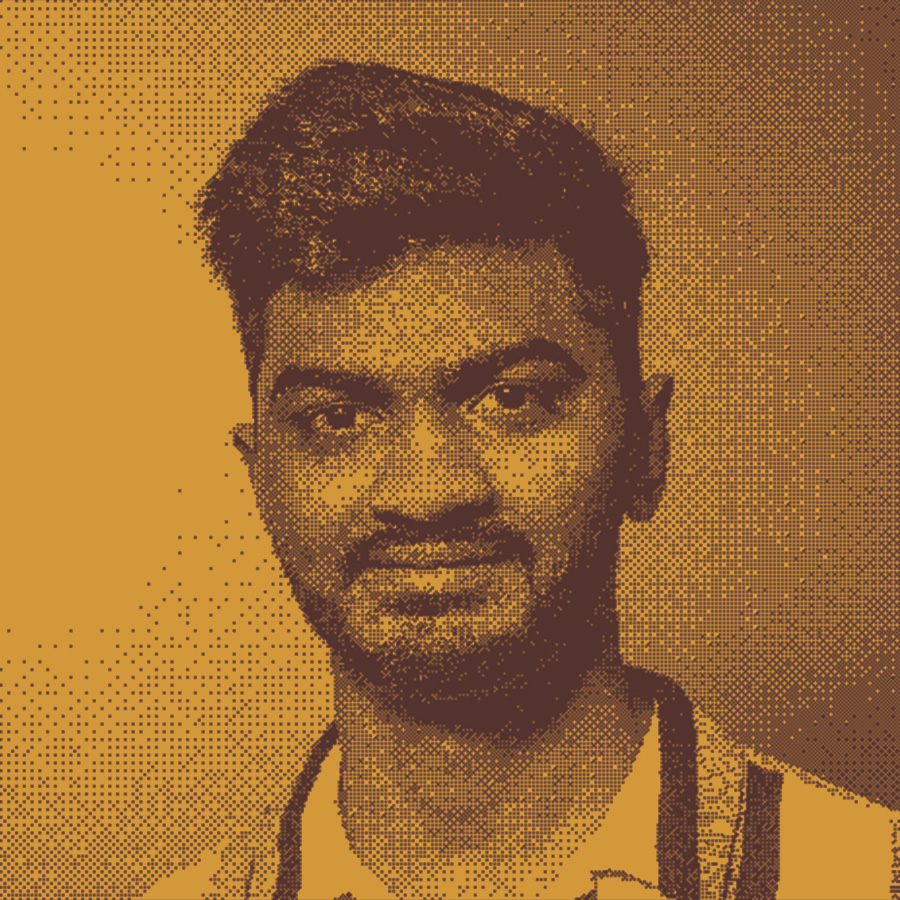
Vishnuvardhan Veluru ('23 M.S.)
When Vishnuvardhan Veluru ('23 M.S.) graduated with a master's degree in data science, he immediately found employment.
He currently works as a data science engineer at health insurance brokerage firm Allied Health.
"We're researching how we can use AI and machine learning for customer acquisition and some other key business areas," Veluru says.
He's already created a flow of data pipelines, a software that moves data from multiple sources to one central location, for the company and is hard at work on machine learning models to help with bidding during the lead acquisition process.
Veluru got his bachelor's degree in electrical engineering, but switched gears to pursue his passion in AI by coming to UNT.
"I learned about data science, data analytics, machine learning and optimization," Veluru says. "I joined the AI Summer Research Program at UNT because there were so many opportunities."
Now he's putting those lessons to good use.
"It's me and one other data expert, so there's always something for us to do," Veluru says. "I enjoy being able to create models for different uses."
He also created an AI that can produce a visual dashboard that shows business improvement, sales analysis and customer retention. This project took him about four months to build, but he doesn't like to call projects "complete."
"The optimization is always a work in progress," Veluru says. "There's always room for improvement when it comes to AI."
The end goal is to make it easier for people to focus on the work that really matters.
"There's always a chance for human error with data entry. We want to lessen that chance and make it so our sales agents can focus more on helping the customer and making real connections."
Making the intangible tangible
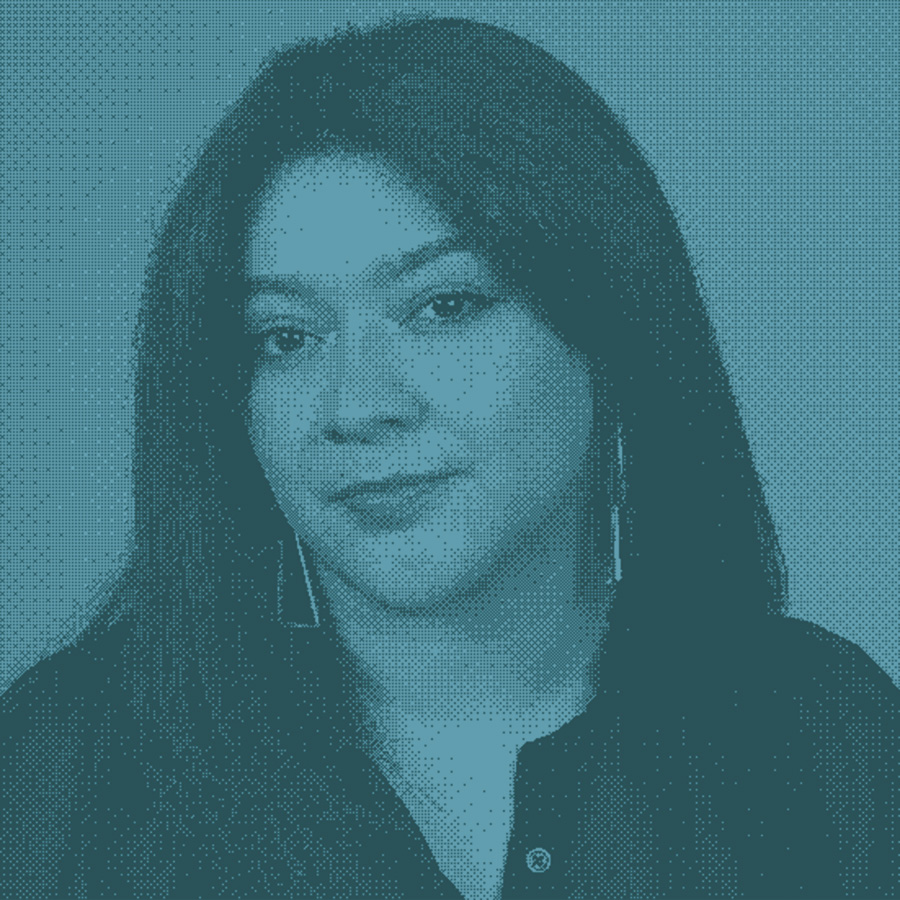
Diana Rojas ('23 M.F.A.)
While there are countless uses for AI when it comes to research and data organization, Diana Rojas ('23 M.F.A.) is using it to help in the creative process.
Rojas, an assistant professor in Art + Design: Media + Communication at East Central University in Oklahoma, creates large audiovisual installations, sculptures and glass works.
Many are themed around light, science or religion.
"I'm really interested in the histories between science and religion," Rojas says. "I like to explore how these invisible things influence how we treat each other, ourselves and the environment."
Amongst all her work, Rojas has used AI in a somewhat unexpected place -- a series of stained glass works that reflects on the cosmos and religion.
"I used different AI programs to create vector files of stained-glass windows that were combinations of angels and black holes," she says. "Then, I used those files as the base for the physical stained glass."
To Rojas, it's important the AI doesn't become the focus of a work, but is used as a background tool.
"You can see digital art online and tell it's made by AI, but I prefer transforming it and bringing it into the physical realm so it's not alienating to a person," she says.
For her next project, Rojas plans to keep using AI as a brainstorming tool. She hopes to continue making architecture-inspired sculptures that utilize AI.
She encourages other artists and students to understand how AI can affect art.
"The technology just keeps growing. We really need to adapt and educate ourselves on what it is and how it works. If we choose to use it, we should try to let it highlight our humanity. If we choose to not use it, we should also feel empowered in that decision."
Making an impact
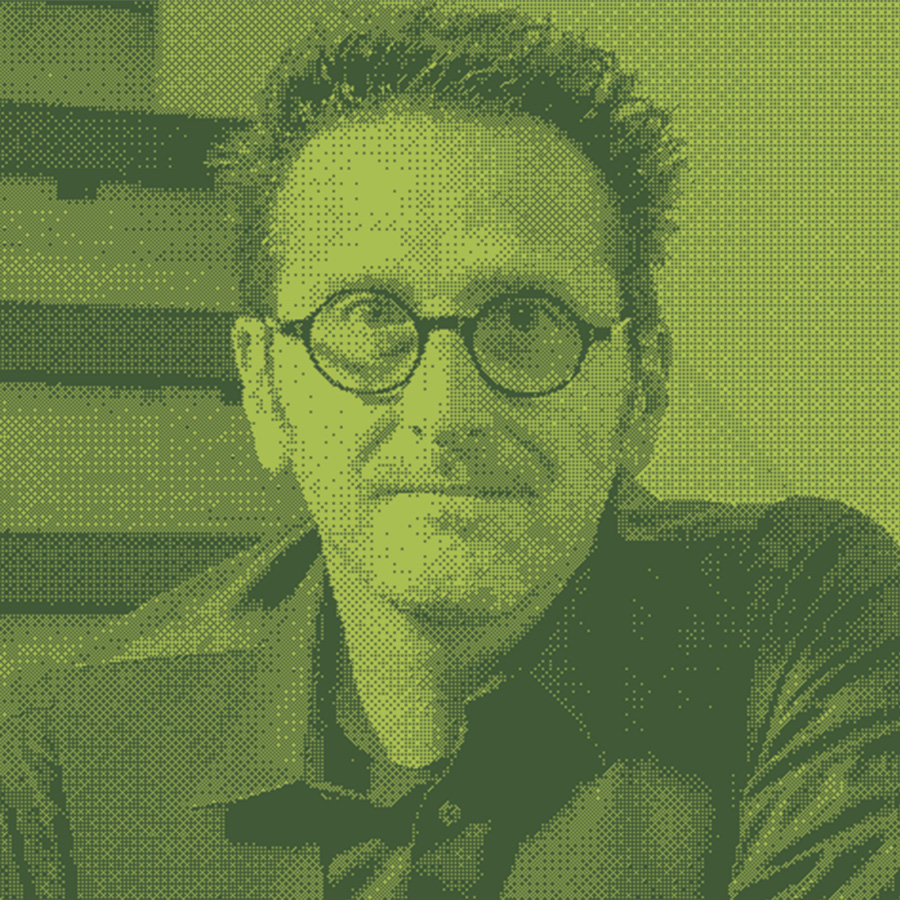
Gary Brotman ('93)
Gary Brotman ('93) journeyed from being a new journalism grad who dabbled as a DJ to CEO of Secondmind, a company working to revolutionize the automotive industry with AI.
His first run with AI, however, was back in the late '90s while working with MusicMatch and the company's Jukebox software, a music player on computers.
"We had guys on the team who developed an algorithm that paid attention to what you listened to -- what got repeated, what got skipped," Brotman says. "Then it compared those choices to all the other users to find new, eclectic recommendations. It wasn't just a thumbs up, thumbs down system."
Eventually, he joined Qualcomm where he became head of AI strategy and product planning. There, he built the Qualcomm AI Engine that powered AI-experiences processor chips in gadgets like phones.
"It was very interesting, but chips don't really catch consumers' interest," Brotman says. "I wanted to work on something where I could create experiences and see their impact."
That's when he took the opportunity to move to England to join a new company, Secondmind.
Brotman first signed on as vice president of product and marketing and eventually became CEO.

The cloud-based AI tool they developed, the Secondmind Optimization Engine, helps engineers streamline the process of designing sustainable gas vehicles and electric vehicles.
"Our vision is to be the second mind of the engineer," Brotman says. "If an engineer who knows about e-motors has a question about power systems in an electric car, Secondmind can help answer that question and point them to better design solutions."
Brotman is excited for the future of the tool.
"It's great because that impact is clear," he says. "We'll help the automotive industry transition to carbon neutrality, we'll speed up the development process and our technology can be extended to help any industry with complex engineering."
Brotman says Secondmind also will educate engineers across specializations -- something he believes AI has the potential to do for everyone.
"I think the fast pace of education, irrespective of demographic, will be massive."
Sharing the knowledge
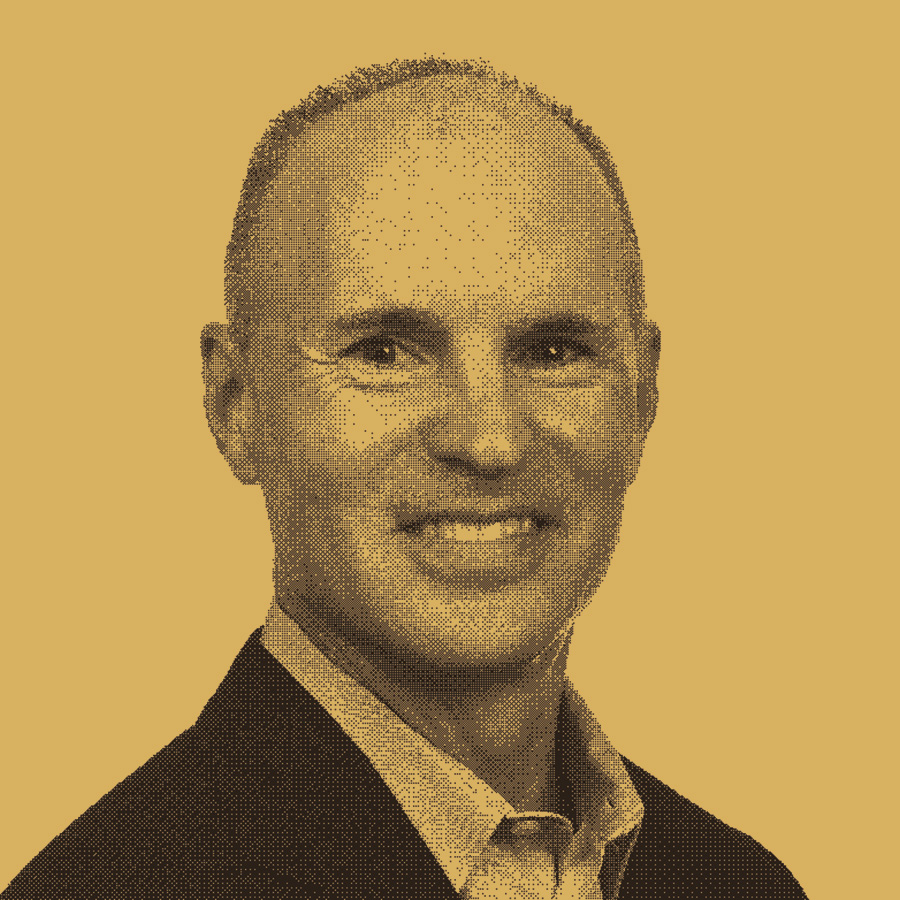
James Bryant ('94 M.B.A.)
As some hone their craft with the help of AI, others are working to share their knowledge.
James Bryant ('94 M.B.A.), with experience at Salesforce and Stanford Health Care implementing technology into their financial operations as director of digital transformation, is now a published author. He and his co-author, Aloke Mukherjee, recently published their book, The Future of Finance with ChatGPT and Power BI.
The book is a guide that explains AI and investing by empowering readers to make smarter investment decisions using ChatGPT and Power BI's visualization tools.
"Our book simplifies complex concepts, ensuring readers at any life stage can leverage AI for finance. It transforms AI's predictive capabilities into actionable insights," Bryant says.
The first chapter provides readers with fundamental financial knowledge. The second dives into Power BI, a data visualizer with AI features, and how to integrate with ChatGPT, an AI-powered chat bot. The rest of the book highlights companies, such as Tesla, John Deere and Moderna, to explore investment opportunities within them, and how to integrate AI into those decisions.

Before the book, Bryant had already been working with AI. He and Mukherjee met while working at Stanford Health Care, where they found a practical way to use AI to solve a common problem: cash flow predictions.
"Hospitals have a hard time predicting how much cash is going to come in monthly," Bryant says. "We used AI to make those predictions and the accuracy was anywhere from 95 - 100%."
For his next steps, Bryant is looking forward to authoring another book on the subject with Mukherjee which will educate non-technical professionals on how to use AI.
"We did this to help people understand how to use this technology and how it can create more value in their lives."